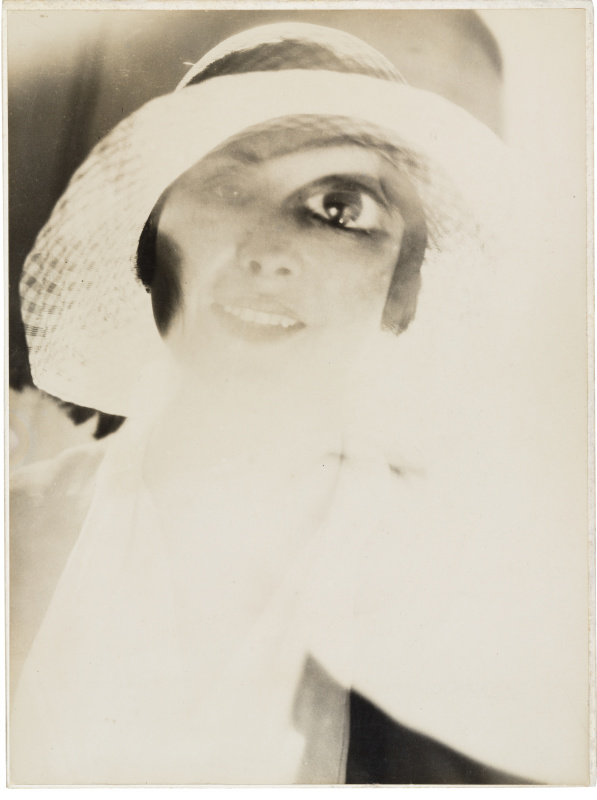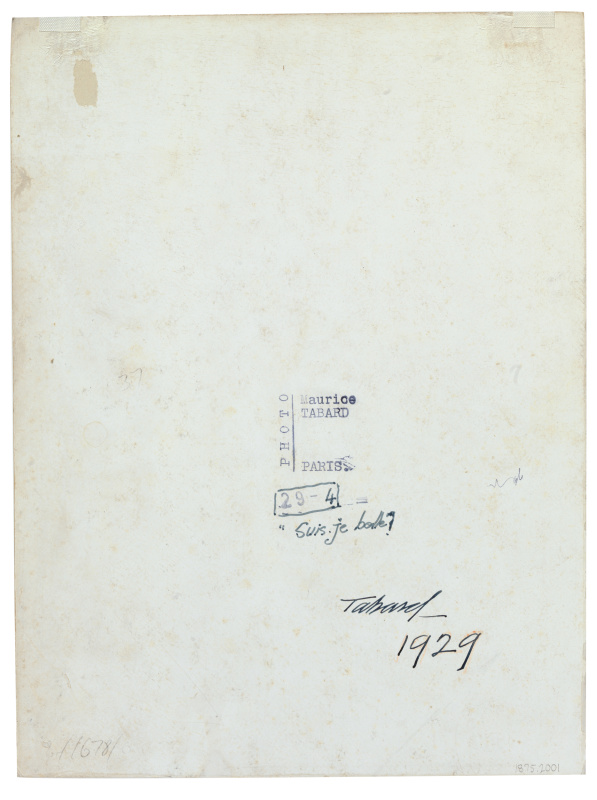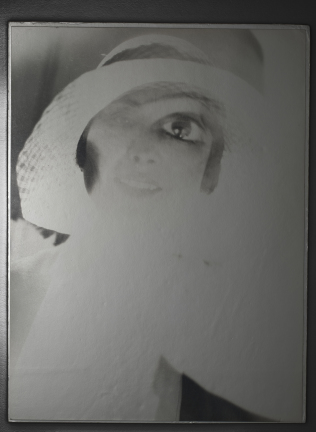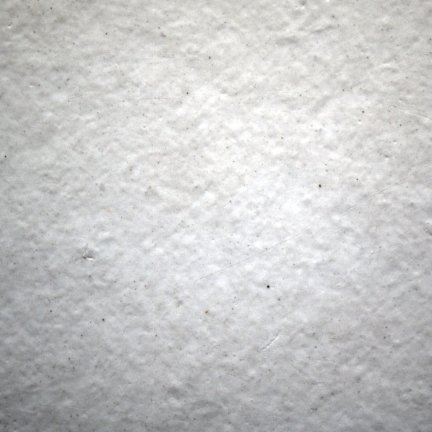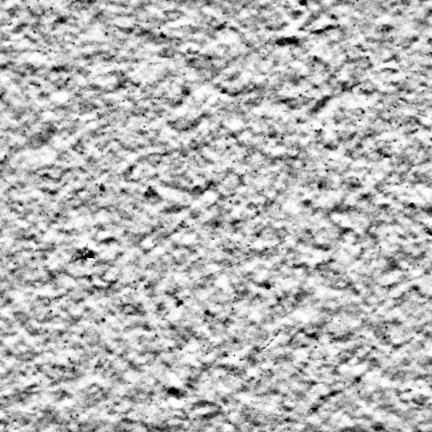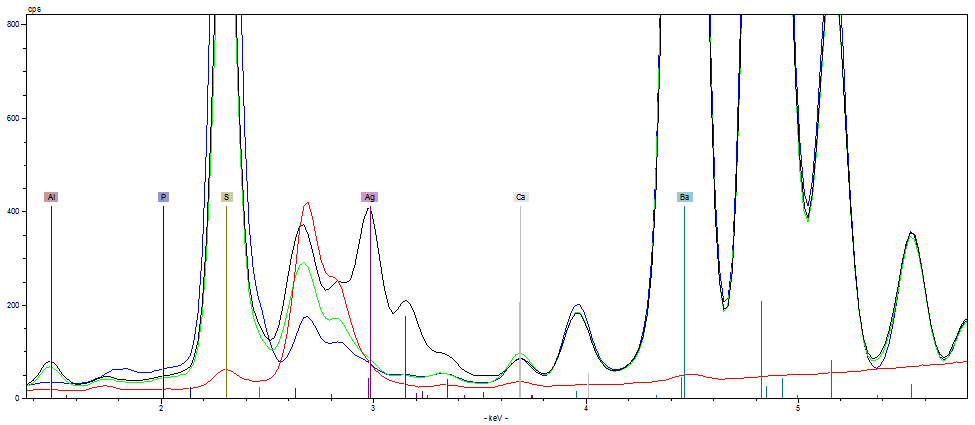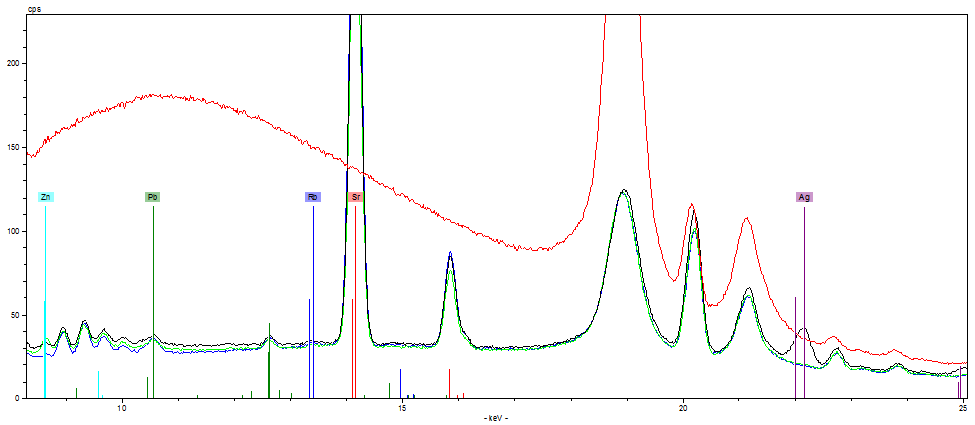Front / Recto
- Title Am I Beautiful? (Suis-je belle?)
- Negative Date 1929
- Print Date 1929–55
- Medium Gelatin silver print
- Dimensions Image 9 5/16 × 6 15/16" (23.6 × 17.7 cm)Mount 9 3/8 × 7 1/16" (23.8 × 17.9 cm)
- Place Taken Paris
- Credit Line Thomas Walther Collection. Gift of Shirley C. Burden, by exchange
- MoMA Accession Number 1875.2001
Back / Verso
- Mount Type Mount (original)
- Marks and Inscriptions Stamped in black ink on mount verso, center: PHOTO/Maurice TABARD/PARIS. Stamped in black ink on mount verso, center: 29–[inscribed in blue ink, 4] [with square outline]. Inscribed in blue ink on mount verso, center: Suis-je belle? Signed in black ink on mount verso, bottom center: Tabard 1929. Inscribed in pencil on mount verso, bottom left: [1678].
-
Provenance
The artist. Marlborough Gallery, New York [1] purchased by Sander Gallery (Gerd Sander), Washington, D.C., April 19, 1979 [2]; purchased by Seth Lester, Maine, September 22, 1979 [3]; sold through Christie's New York (sale 8126, lot 41) to Monika Half, Bronxville, N.Y., April 5, 1995 [4]; purchased by Thomas Walther, March 11, 1997 [5]; purchased by The Museum of Modern Art, New York, 2001.
[1] Gerd Sander, letter to Maria Morris Hambourg, October 31, 2013.
[2] Sander, letter to Hambourg; and Marlborough Gallery invoice no. 5166.
[3] MacGill/Walther 2001(3), p. 22; Sander, letter to Hambourg; and Sander Gallery inventory no. SG/1678/X and invoice no. 431. Seth Lester was a painter and photographer.
[4] MacGill/Walther 2001(3), p. 22; and Monika Half, e-mail to Simon Bieling, April 8, 2005.
[5] Half invoice, March 11, 1997.
Surface
- Surface Sheen Semireflective
- Techniques Mount Retouching (additive) Double exposure
- PTM
-
Micro-raking
Raking-light close-up image, as shot. Area of detail is 6.7 x 6.7 mm. Department of Conservation, MoMARaking-light close-up image, processed. Processing included removal of color, equalization of the histogram, and sharpening, all designed to enhance visual comparison. Department of Conservation, MoMA
Paper Material
- Format Metric
- UV Fluorescence Recto negative Verso no data
- Fiber Analysis No fiber data available
- Material Techniques Developing-out paper
-
XRF
This work was determined to be a gelatin silver print via X-ray fluorescence (XRF) spectrometry.
The following elements have been positively identified in the work, through XRF readings taken from its recto and verso (or from the mount, where the verso was not accessible):
- Recto: Al, P, S, Ca, Zn, Rb, Sr, Ag, Ba, Pb
- Mount: P, S, Ca, Zn, Rb, Sr, Ag, Ba, Pb
The graphs below show XRF spectra for three areas on the print: two of the recto—from areas of maximum and minimum image density (Dmax and Dmin)—and one of the verso or mount. The background spectrum represents the contribution of the XRF instrument itself. The first graph shows elements identified through the presence of their characteristic peaks in the lower energy range (0 to 8 keV). The second graph shows elements identified through the presence of their characteristic peaks in the higher energy range (8 to 40 keV).
Areas examined: Recto (Dmax: black; Dmin: green), Verso or Mount (blue), Background (red)
Elements identified: Al, P, S, Ca, Ag, Ba
In Context
Related People
-
Artist
Related Links
- Cultural Hubs Paris

